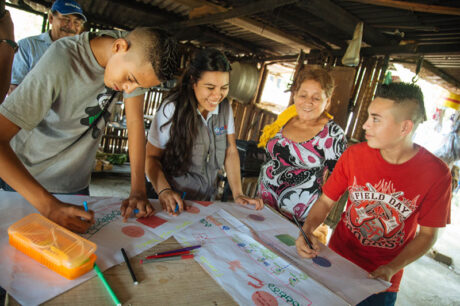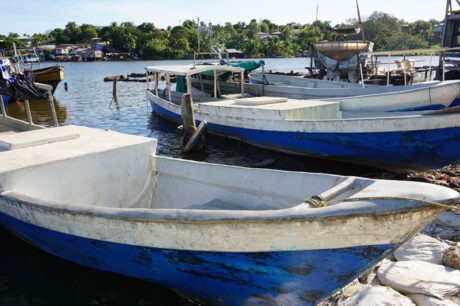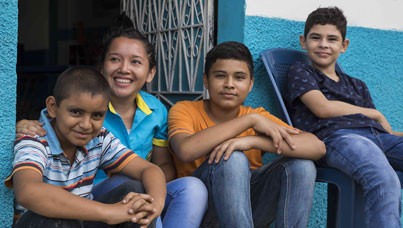As the school bell rings at the end of the day at Soufrière Comprehensive Secondary School in Saint Lucia, students hastily pack up their books and supplies and rush out the door to head home or meet up with friends. But for a group of more than 50 students, the bell means it’s time for their fencing lesson.
Pinky Fontenelle, 15, and her classmates put on their protective pads, gloves and masks and pick up slender fencing swords, called épées. After learning some basic moves, they practice in pairs, swords clinking together in mid-air.
The introduction to fencing is just one part of the Sacred Sports Foundation’s Beyond the Bell After-School program, where students participate in an array of organized sports, get help with homework, and build life skills. The program is receiving support from the U.S. Agency for International Development’s (USAID) Community, Family and Youth Resilience program (CFYR), which is implemented by Creative Associates International in Saint Lucia, St. Kitts and Nevis and Guyana.
Pinky says the activities at Beyond the Bell have done much more than teach her how to wield an épée.
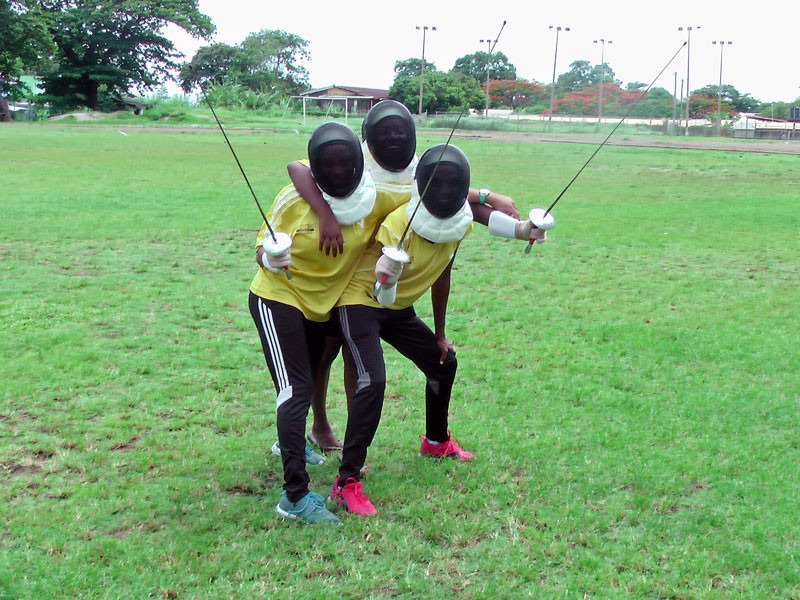
“This program has benefitted me in so many ways: it has taught me good sportsmanship, leadership, teamwork, and how to cooperate with others,” she says.
USAID, through the CFYR program, is working to support 13 similar after-school programs across the three countries that serve a total of 570 boys and girls. The initiative supports family networks, communities, service providers and government agencies in implementing successful approaches to reduce crime and violence and increasing opportunities for vulnerable youth.
Programs focus on positive youth development, utilizing community activities, sports, arts and workforce readiness initiatives that seek to build social and leadership skills in youth like Pinky.
Putting education first
The after-school programs offer a wide range of activities – including creative arts, life skills building, sports, drama, dance, gardening and music – but homework assistance is a primary focus of each one.
The rate of secondary school completion in Saint Lucia is about 80 percent, but drops to 54 percent among the poorest students. In Guyana, only 56 percent of all students complete secondary school, and the completion rate among the poorest youth is just 26 percent.
Many students arrive home from school in the afternoon while their parents are still at work, so parents are unable to supervise or encourage them to do their schoolwork. But at Beyond the Bell, students set aside time to study and also have support from a team of about a dozen tutors and mentors.
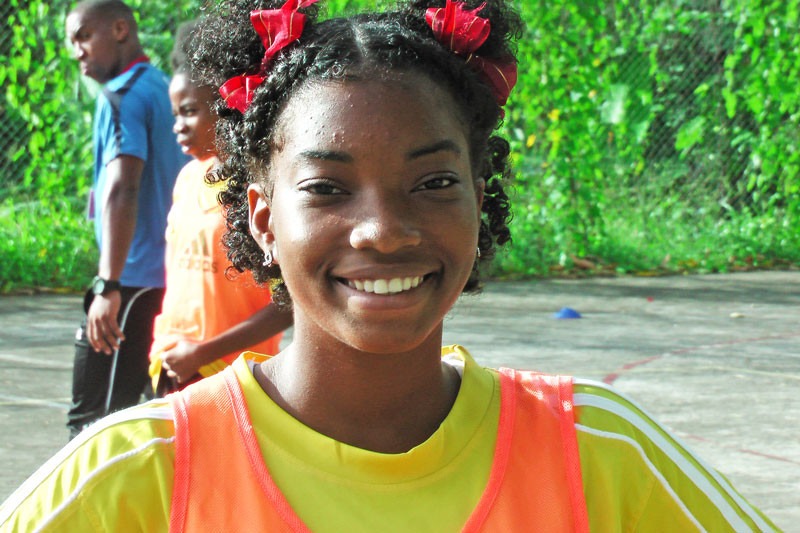
“When I heard what the program was about, I wanted to go every afternoon,” says Yoanne Murray, 15. “It’s helpful because in the afternoon I get to sit and do my homework. It’s not very often when I go home that I can focus and do it right away.”
Nova Alexander, director of the Beyond the Bell program, says that for the 25 girls and 31 boys enrolled, the additional support provided for a few hours every evening is giving students a better outlook on school.
“This program has allowed us to be able to deliver everything that the child needs to go home with a better attitude toward school,” Alexander says. “That will allow them to continue their homework and their education, while benefitting from important social and life skills that will add value to their lives. It has just been incredible.”
Creating safe spaces
In Vieux Fort, Saint Lucia, Eliza Victor runs an after-school program called Building the Future, run by local cultural organization Ti Mamai, which means “Little Children” in creole. Victor says the program not only offers homework help, sports, arts and music, it also provides a safe space for students who otherwise might be spending time out on the streets.
“We ask the children what their hobby is, and they don’t really know … after lessons end at 3 p.m., they’re just hanging about, and it’s not safe,” she says. “So the program is providing a kind of safety net for these children as well, and it keeps them away from trouble. When they go home, their parents are home already.”
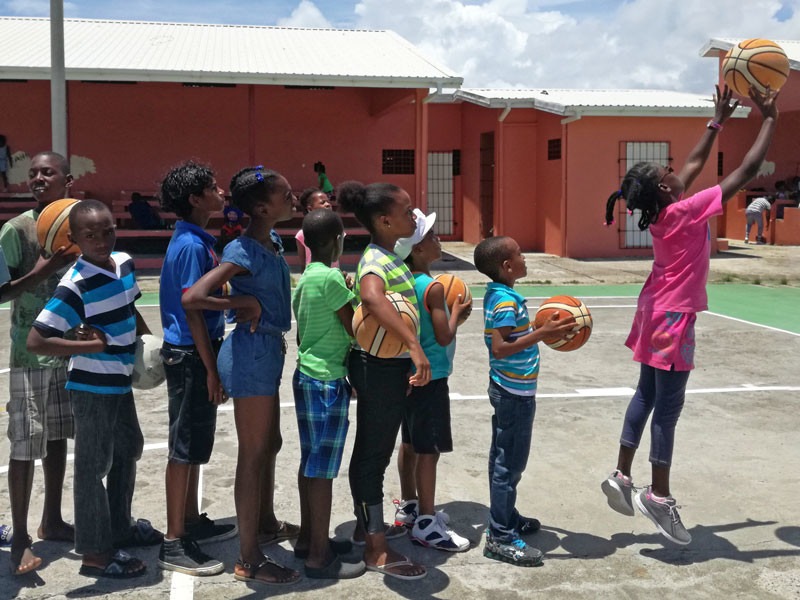
Alexander further notes that after-school programs, like Beyond the Bell and Building the Future, are also helping students build resilience to challenges they may face within their own homes.
“Of the 56 children in our program, only 11 of them have both parents,” she says. “A lot of these young children between the ages of 11 to 16 are doing quite poorly in school and are having issues at home or social issues. In some cases, they are sexually active, drinking alcohol, and either themselves or their families, have a history of crime and violence and issues with dealing with conflict.”
But whether studying for an exam, playing music, putting on a dance performance, or learning how to fence, students are learning the skills they need to overcome obstacles, work with others and stay focused on setting and achieving their goals.
“The transformation has been quite incredible,” Alexander says. “When the bell rings, they know it’s a good program. I think a lot of the young people might not realize how much they’re developing, becoming more mature and better equipped to handle challenging situations.
“The whole idea of youth, family and community, working as a unit, is going to have a big impact. I think it’s an excellent model and we love how it’s working.”
With reporting by Kathy McClure in Saint Lucia.

